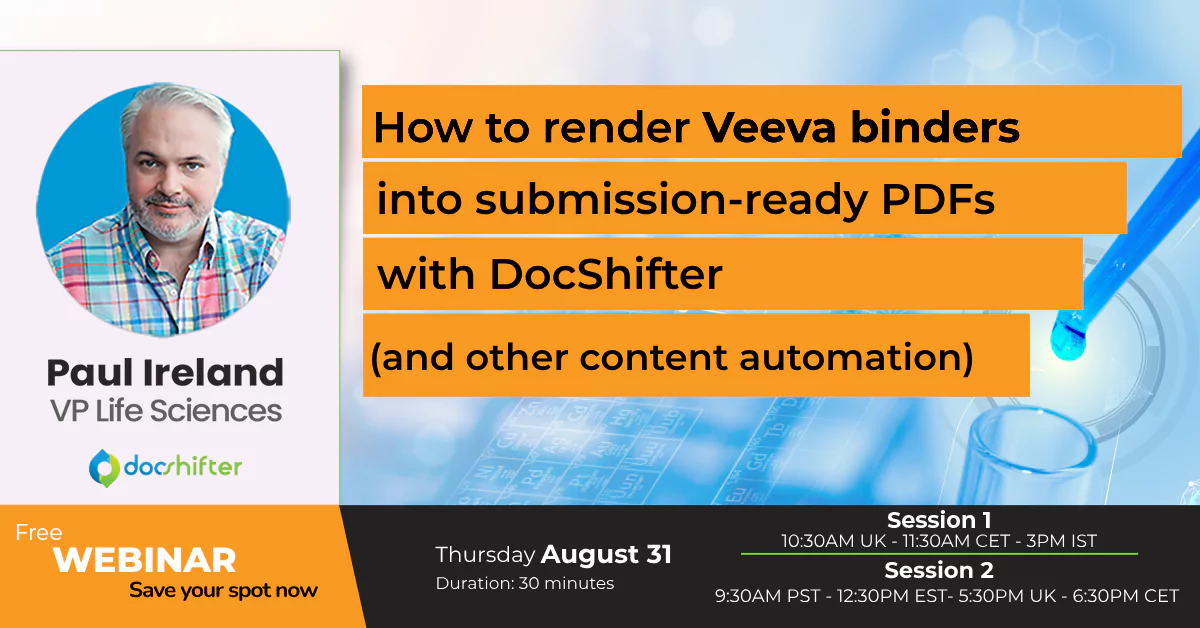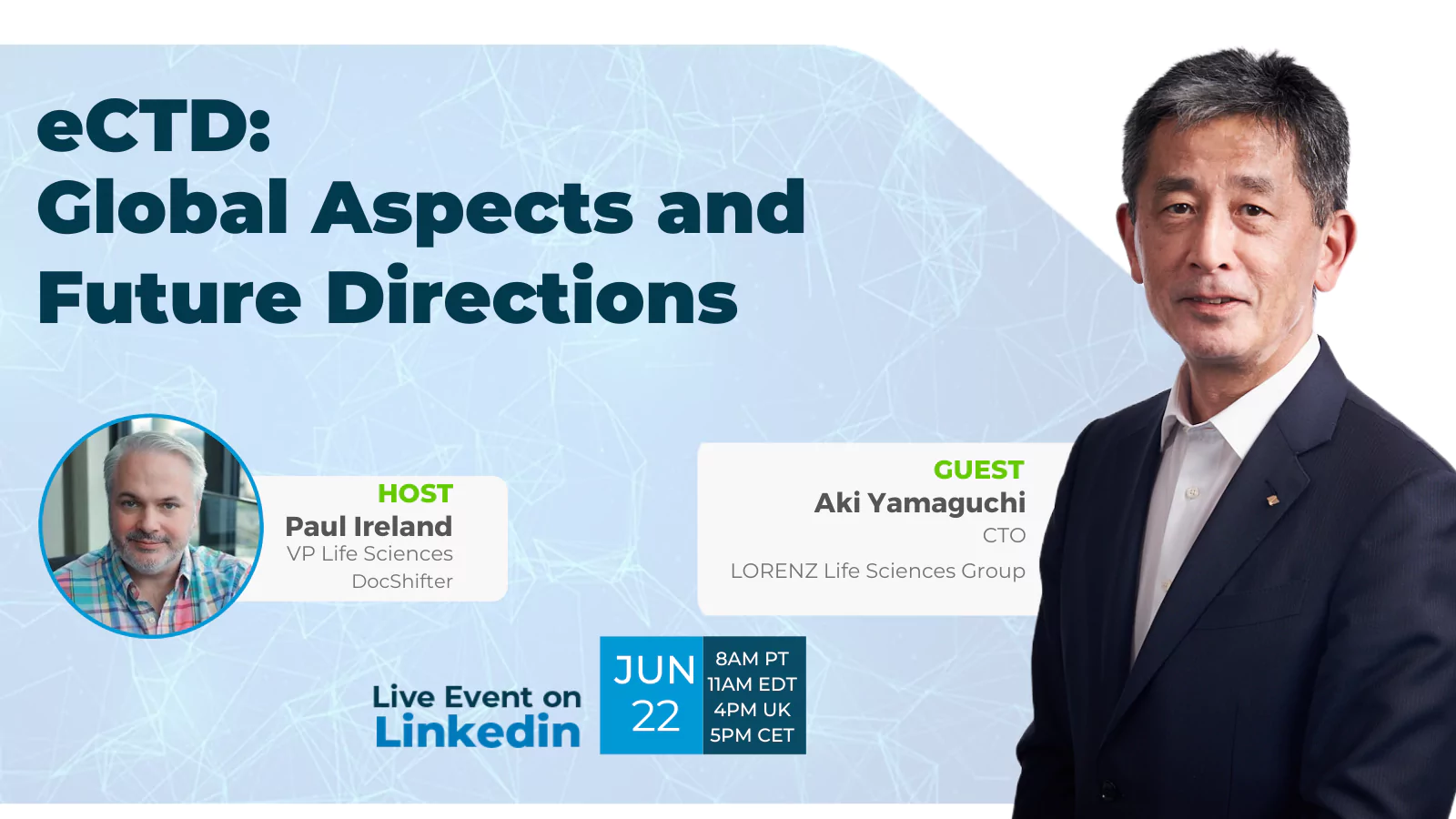For this month’s edition, we knocked on Daniel Capion‘s door. Daniel is a documentation expert with +20 years of experience from biotech, mid-sized and big-pharma industry as well as medical device knowledge.
We interviewed him on 4 situations you have probably faced yourself in regulatory operations, and practical tips to overcome them.
Enjoy the read!
Challenges and Practical Tips
Q1: What are the challenges you have seen when collaborating with external parties? (CRO’s, medical writers, and others) What suggestions can you give to make this easier?
Well, there can be quite a lot. The following might sound basic, but is nevertheless based on +23 years of real-life experience.
Assuming that the (scientific) objective of the deliverable is already carved out in stone, there are a number of Project Management essentials that keep coming back, the when, the who, the how.
The “when” is usually easy, we might even all be aware of the deadline. However, deadlines change, and you rarely get additional time to complete unless something goes really wrong along the way. This leads me to my mantra for high-priority projects: “Don’t delay what you can do today” – in many situations, you will need all the time and capacity you can get.
Also, changes in the setup on the external side can be a pitfall. And yes, you might have a legal contract you can wave around whereby the external party is bound to deliver – but it doesn’t really help if the key author of an essential document leaves a CRO for another position or ends up on sick leave, etc. No contract in the world, regardless of how beautifully composed, can save your project if essential external key resources are suddenly missing. Thinking in back-up and worst case scenarios can help you mitigate a bit – this could preferably also be built into the legal agreements with externals.
The “who” also seems straight forward.
Project Management goes without saying and use of basic PM tools like a RACI model or one of the many derived models is a good place to start. But equally important could be to get people working together to feel a co-ownership of the tasks ahead – shaken together a bit one way or the other. It is often useful to also consider the situations when things simply don’t work out. Establish a seniority role with a clear mandate to decide when things heat up and need escalation.
The ”how” is really interesting, there are so many ways to work together and so many ways to do the same task. Having considered the “when” and the “who” it could be beneficial to agree on the following practical “how” elements:
- Authoring process (incl. review, approval, signatures)
- Document templates (internal, external, eCTD / global compatibility)
- Data (are certain standards to be met, SEND, CDISC, imaging, etc.)
Considering all the elements above can make your (and the CROs) life a lot easier, than if this is left undecided – and thereby getting you closer to achieving your (Company’s) objectives.
Q2: Global submissions: What are the most common challenges and situations you faced? How did you overcome those?
In the early days of electronic submissions, many of us faced a number of interesting technical challenges that could make the day (and nights) of Regulatory Operations staff really long. Just to mention a few legacy examples:
- Publishing issues of double-byte character set (e.g. Japanese)
- Render issues of Company logos in documents, where the graphics would multiply the file size 1:1 with the number of pages in a document.
Nowadays, I believe most, if not all, technical issues are being perfectly addressed by qualified vendors.
Although technical challenges still exist today, we should be able to rely on professional vendors to streamline the technology side of our business. Instead, I would like to mention a few non-technical challenges that can jeopardize global submission efforts and can not easily be resolved by technical fixes.
Content/document reuse
A number of companies wish to harvest the benefits of “simultaneous submissions” and/or other gains associated with global content/document reuse. Assuming that your Document/Publishing/PDF vendor takes care of the technicalities, you are still left with the task of getting globally reusable documents created and maintained. Alignment across global submission teams and agreement on a “minimum viable document” can be a concept you then want to pursue. A useful tool to support the “minimum viable document” concept is Authoring/Style Guides, tight global coordination and perhaps establishing a Process Owner for such documentation artifacts.

Submission readiness
Being a young company, the task of getting the first initial sequence out of the door and submitted, is in itself a major achievement. Along the way, in the process of achieving the company’s most important goal, other important tasks might be forgotten or rightfully down prioritized.
A challenge that soon after the initial submission can become very real, is the lack of submission readiness of documents and data not in obvious scope of the initial submission. Additional Requested Documentation, additional data, additional CRFs, additional images – depending on the type of submission, the type of additional requested info can be varied, it can be a little, or it can be a lot. Regardless, the sponsor usually has a very limited time by which the additionally requested info needs to be with the authority in order to comply with the respective regulatory approval procedure.
Thinking ‘submission readiness’ into the management process of all potentially submittable artifacts can be a risk reducing initiative – rendering these submission components in an ever submission ready state. For R&D documents, this doesn’t have to pose additional work or cost. Just make it submission-ready right from the start – that can be done with an almost equivalent process and the outcome is ready-to-use.

Q3: How do you see the future of Regulatory Operations? What do you think is going to change? How will the existing roles evolve?
Some like to compare Regulatory Affairs with the spider in an R&D web. Following that analogy, Regulatory Operations would probably compare to the R&D spider’s Engine Room – when it comes to Regulatory Submissions. With the increase in data centricity, we should expect Regulatory Operations to be increasingly data capable going forward. Many companies have already embarked on projects to support increased data capabilities – this will come for sure and be of benefit to all.
Once in a while, I get asked when I believe data will have fully replaced documents in regulatory submissions. In order to address this question adequately, understanding the role of data and the role of documents can be helpful. Simply put, data is excellent at presenting “facts”, while documents are good at narrating the data presented – providing the context supporting your scientific story.
Historically a lot of data has been submitted in documents. This is messy, clunky and inefficient to reprocess at the receiving end. On the other hand, documents are an extremely cheap and efficient way of creating a narrative for the data submitted. My guess is that we will be needing both going forward, each supporting where makes most sense – structured and well aligned data supported by lean, crisp and reviewer-friendly documents ideally linking scientific narratives to the underlying raw data. In other words, the R&D spider’s Engine Room staff will continue to be key when delivering the submissions going forward.

Q4: What do you see as the biggest challenge in preparing content that feeds into regulatory submissions? How can it be solved?
Obviously, the biggest challenges can very well depend on the maturity and readiness of the organizations trying to fulfill their regulatory submission ambitions. Generalizing a bit, however, the following challenges are all very real – some are easily mitigated while others are complicated..
Timely submission readiness – I frequently meet a misconception that it is not worth the effort to create R&D documentation in a submission ready format from day one. With today’s efficient tools, you can create eCTD R&D documentation from day one without troubling and enforcing any unnecessary burden on R&D authors.
Global eCTD compliance – I still regularly encounter R&D Submission Documents created recently that are lacking even basic technical eCTD elements like navigational aids, bookmarks, initial view settings and so on. A painless way to mitigate this challenge is to engage a dedicated vendor R&D authoring platforms – it is so much more than just templates. Make sure to engage with a vendor that can also cater for any CROs or external document providers your company may use.
Uncontrolled redundancy – Having slightly different but “equivalent” statement artefacts not aligned throughout documents in a submission is a pain and can be cumbersome to control.
The simplest solution to this is manual control – review followed by more review – this is and costly on man-hours. It can be helped along by an oversight of which documents have redundant statement artifacts, and can be expanded by a mapping of which documents in which versions have which statements and so on. However, this requires quite some effort.
Going forward*, this particular pain is a perfect candidate to be solved by structure-based authoring.
*) I first learned about structure-based authoring in February 2000 at an annual DIA EDM conference in Philadelphia. Now, more than 20 years later, this concept hasn’t yet caught on as well as we all expected back then. Perhaps people are more comfortable with tangible documents rather than “abstract” information components – perhaps the technology barrier is not yet low enough – time will tell.
If you have experienced any challenges or difficult situations that have kept you up at night, we’d love to hear about it. Let us know in the comments.
About the author
Daniel Capion is a documentation expert with +20 years of experience from biotech, mid-sized and big-pharma industry as well as medical device knowledge. He has held various positions as head of Global Regulatory Operations in companies such as Genmab, Ferring and LEO Pharma. In 2021 he founded Documizer, a company with a dedicated vision to enable R&D authors to do science – not wasting time on documentation technicalities.
Daniel has a Master of Science (Pharmacy) and an Executive MBA.
Documizer offers innovative solutions for global eCTD R&D authoring and has patents pending for next generation authoring initiatives.




